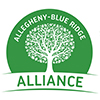Dominion has once again been sent back to its room to redo its homework! In an October 26 request for further information from Dominion Transmission, Inc. (DTI), managing partner for the Atlantic Coast Pipeline (ACP), the Federal Energy Regulatory Commission (FERC) made 69 specific requests, several of which suggesting that there continues to be dissatisfaction with the adequacy of the information being provided by DTI about how it would build the ACP. The agency has requested responses from DTI by November 15.
Among the requests, most of which deal with water and karst issues, were the following:
- In order to determine the combined impacts of the various proposed construction activities on each waterbody, FERC consolidated the various waterbody-related tables (appendices 2A, 2B, 2C, I, table 2.6-2) filed by Atlantic and DTI on April 15, 2016, and table 20-1 (potential blasting in waterbodies) filed on July 1, 2016. Through this process, we have identified a multitude of inconsistencies detailed below, and request that Atlantic and DTI conduct a thorough and careful review of the waterbody crossing information provided in the table requested above to correct these inconsistencies. (Note the language in bold and underlined. Implies that FERC doesn’t trust DTI to do a “thorough and careful review.”) – Information request #3
- Provide a response to comments and reports (William K. Jones: Hydrogeologic Setting of Little Valley at Bolar, Bath County, Virginia; and Richard A. Lambert: Assessments of Four Karst Systems in Highland-Bath Counties, Virginia along the GWNF-6 Route) filed by Jeannette B. Robinson on September 12, 2016 (Accession No. 20160912-5625) and Intervenor Motion filed on September 23, 2016 (Accession No. 20160923-5265). (Evidence that FERC staff has actually read some of the fine print of submissions.) – #8
- Discuss how the creation of forest edge or fragmentation would affect habitat and wildlife, including potential impacts on federally-listed threatened and endangered species and migratory birds. Describe measures that would be implemented to avoid, minimize, or mitigate impacts on interior/core forest habitat. – #13
- Provide an updated Karst Mitigation and Monitoring Plan developed in coordination with the appropriate agencies that takes into account unknown underground features, porosity, and connectivity of these subterranean systems, and the potential implications to subterranean obligate species. – #16
- Describe the potential impacts of natural gas being drawn into a cave system due to barometric changes and methane dissolution into groundwater in the event of a natural gas leak. – #44
- Provide a landslide mitigation plan that describes the BMPs (Best Management Practices) to be utilized in landslide/debris flow prone areas to mitigate for the hazard during construction and to maintain the structural integrity of the pipeline during operation. – #50
- File documentation that Atlantic is not precluded from establishing an easement for the ACP on each Virginia Outdoors Foundation (VOF) easement crossed. Atlantic should also identify any specific construction, restoration, and/or operation mitigation measures identified by the VOF that would be implemented to promote compatibility with the purpose and values of the easements. (This request presents DTI with a bit of a dilemma. The VOF has indicated it will not consider the company’s easement swap request for the ACP until its next VOF Board meeting, scheduled for February 9, 2017. That is 12 weeks after FERC’s deadline for responses to these requests!) – #66
FERC Raises More Hard Questions About the ACP

